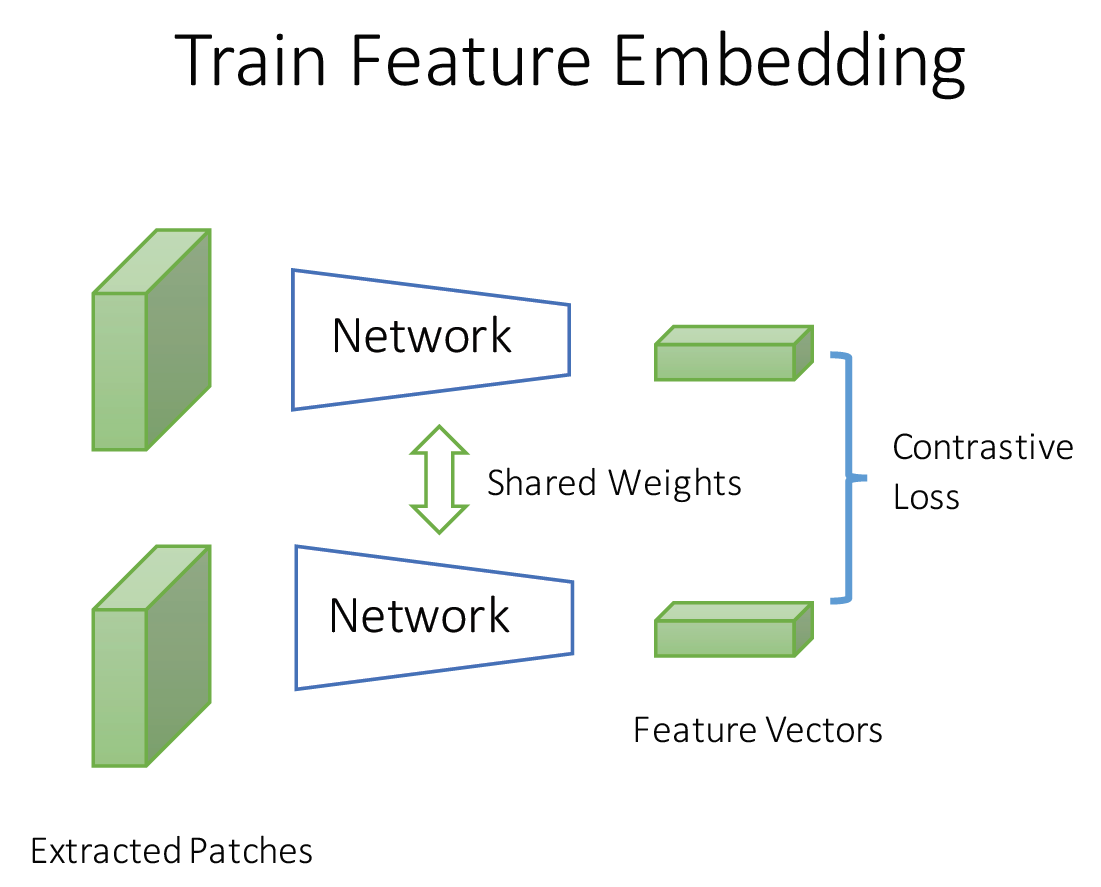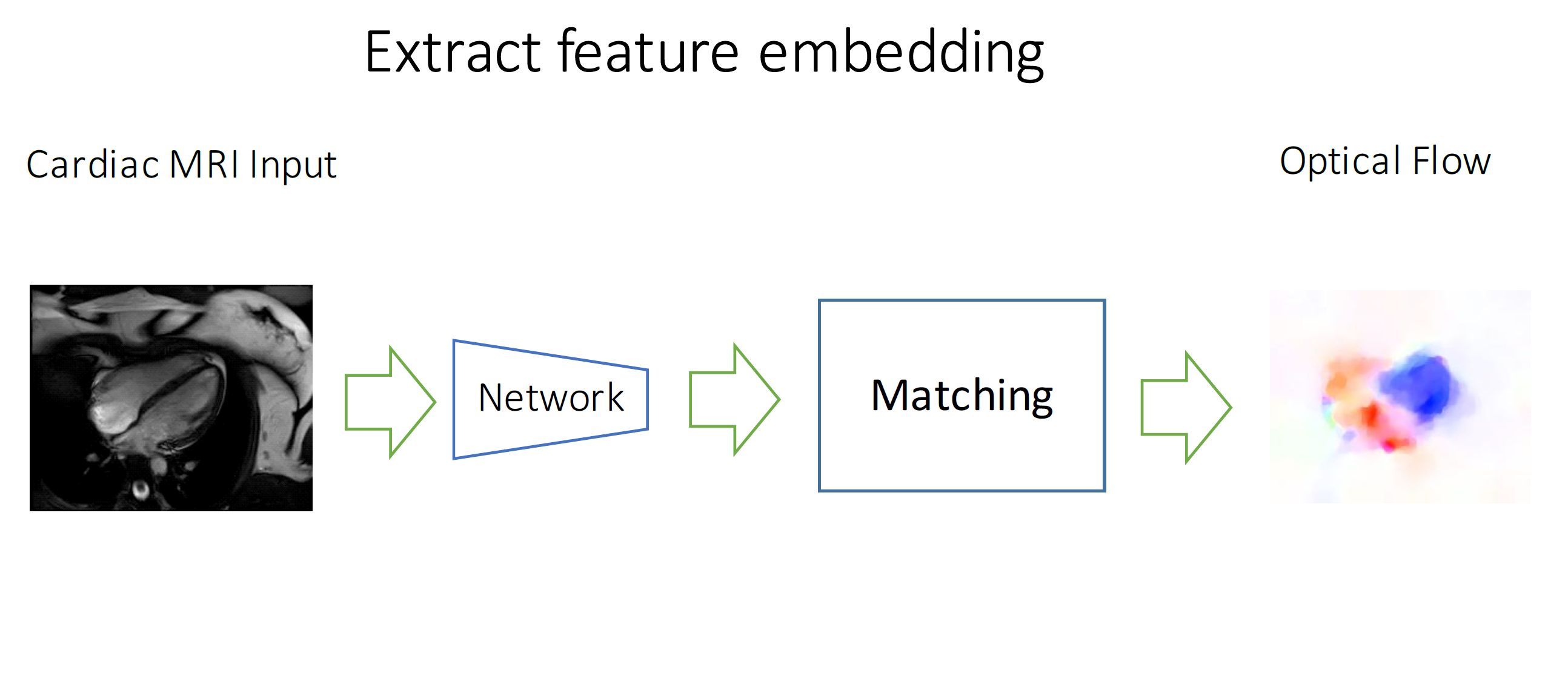Cross-modality Training to Learn Cardiac Motion Flow for SSFP MRI images
In process of submission

In process of submission

Accurate cardiac motion estimation from standard cardiac MRI is of great value in clinical diagnosis. Current cardiac motion methods using displacement tracking in Steady State Free Precision (SSFP) MRI suffers significant limitations in reproducible accuracy and manual intervention. Alternative advanced MRI technique Displacement Encoding with Simulated Echos (DENSE MRI) can provide accurate 3D motion measures, which can supervise SSFP to produce more reliable cardiac motion solution. In this work, we present the first approach to learn cardiac flow in SSFP domain by using DENSE data as cross-modality supervision. We first retrieve 2D correspondences in SSFP from DENSE motion modality, based on an accurate spatial-temporal cross-modality registration. Then we train a feature embedding supervised by the correspondences from DENSE and propose a flow algorithm using the learned feature embedding. Furthermore, we present a purely self-supervised method to retrieve accurate segmentation from cardiac motion, which is then fused to generate sharp cardiac flow free from background noise. Our learned flow representation is efficient and fully automated at the testing stage, which shows favorable improvements both qualitatively and quantitatively compared to both classical and state-of-art flow methods. Our method efficiently leverages the limited amount of data from cross-modality supervision, which we believe will provide wider insight more than purely solving cardiac motion estimation, but for general medical image problem such as correspondence learning as well.
Introduction slides: intro.pptx
1. Conduct spatial-temporal registration for the two modalities

2. Train a Siamese Network to learn robust feature embeddings for SSFP image patches

3. Conduct patch matching and edge-preserving interpolation to produce dense flow fields

4. A self-supervised approach to retrieve heart segmentation based on aggregated motion flow magnitude to get the ROI and get rid of background noise
